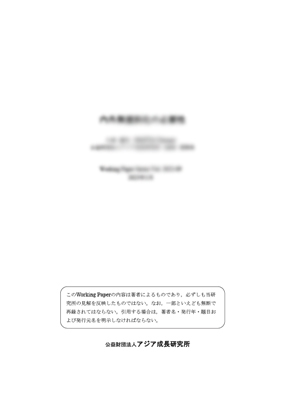Can the Fall of Saving Rates Increase Chinese Urban and Rural Residents’ Demand?

| Author | Jin Fan, Yan Wang, Xing Wan |
|---|---|
| Date of Publication | 2007. 5 |
| No. | 2007-10 |
| Download | 1315KB |
Contents Introduction
The rise of China’s national saving rate reflects increases in the saving rates of residents (RSR), enterprises (ESR) and the government (GSR). Among these rates, the RSR plays the key role. This paper constructs a social accounting matrix for the consumption of China’s urban and rural residents and develops a recursive dynamic CGE model based on a prototype from the World Bank. The model is used to analyze several scenarios where shocks alter the three types of saving rates and thereby affect the consumption demand of China’s urban and rural residents. This analysis leads to five major conclusions. First, changes in RSR and ESR have larger impacts on consumption demand than changes in GSR. Declines in RSR and GSR lead to increased consumption demand, but the fall of ESR does not have similar effects. Second, decreases in RSR and GSR, as well as increases in ESR, facilitate upgrading of consumption structure by both urban and rural residents. Third, rural residents are more sensitive to changes in RSR and GSR than urban residents. Therefore, increases of government consumption (which lower GSR) will help expand consumption of rural residents. Fourth, lowering ESR can stimulate housing demand in the short run, but this will reduce consumption demand in the long run because incomes of residents will fall as a result of declines in the investment of enterprises. Urban residents are more affected by changes in ESR than rural residents but low-income urban households and high-income rural households are both sensitive to change of ESR. Fifth, in the short run, demand for transportation and communication, education and recreation, and especially housing, is sensitive to changes in RSR and GSR. However, in the long run, RSR and GSR have larger effects on the demand for education and recreation and transportation and communication.
